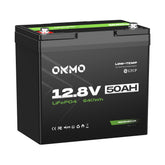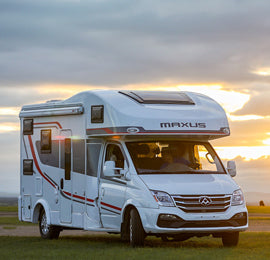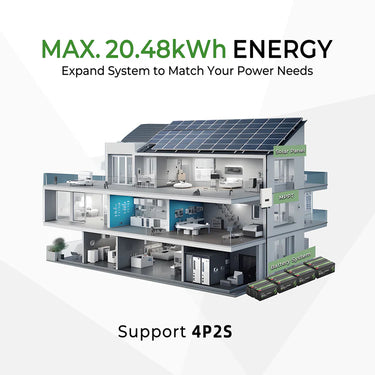What is a Lithium-Ion Deep Cycle Battery?
 The Powerhouse Built for Endurance, Not Just a Burst
The Powerhouse Built for Endurance, Not Just a Burst
Unlike your car’s starter battery (designed for short, high-power bursts to crank an engine), a deep cycle battery is engineered for sustained energy delivery. It can be repeatedly discharged up to 80-100% of its capacity and recharged without significant damage—a feat that would destroy a standard starter battery in weeks. Lithium-ion (Li-ion) chemistry has revolutionized this category, but it’s not the only player.
Part 1: What Makes a Battery "Deep Cycle"?
Core Design Difference:
-
Starter Batteries: Thin lead plates optimized for surface area → high instant current (e.g., 500CCA).
-
Deep Cycle Batteries: Thicker lead plates or stable lithium compounds → withstand deep discharges without plate degradation.
Key Performance Metric:
-
Depth of Discharge (DoD):
-
Lead-Acid: 50% DoD recommended (100% discharge halves lifespan).
-
Li-Ion: 80-100% DoD routine (e.g., OKMO LiFePO4 handles 100% DoD for 5,000+ cycles).
-
 Part 2: Lithium-Ion Deep Cycle Batteries – The Game Changer
Part 2: Lithium-Ion Deep Cycle Batteries – The Game Changer
Advantages
-
Unmatched Cycle Life
-
LiFePO4: 3,000–15,000 cycles (vs. 300–500 for lead-acid).
-
Example: Daily 100% discharge = 10+ years lifespan.
-
-
Higher Energy Density
-
150–200 Wh/kg (3x lead-acid’s 50 Wh/kg).
-
Impact: Halves weight for RV/kayak installations.
-
-
Efficiency & Speed
-
95–99% efficiency (vs. 70–85% for lead-acid).
-
Charges 5x faster: 0%→100% in 1–2 hours (lead-acid: 5–10h).
-
-
Zero Maintenance & Resilience
-
No watering, acid leaks, or terminal corrosion.
-
Operates at -20°C to 60°C (AGM fails below -5°C).
-
Limitations
-
Upfront Cost
-
3–5x pricier than lead-acid (e.g., $900 vs. $300 for 100Ah).
-
Counterpoint: Lower lifetime cost due to longevity.
-
-
BMS Dependency
-
Requires Battery Management System (BMS) for:
-
Overcharge/discharge protection.
-
Cell balancing (critical for longevity).
-
-
BMS failure = catastrophic battery damage.
-
-
Cold-Weather Constraints
-
Charging below 0°C damages cells (discharging OK to -20°C).
-
Solution: Built-in heaters (premium models only).
-
 Part 3: Beyond Lithium – Other Deep Cycle Batteries
Part 3: Beyond Lithium – Other Deep Cycle Batteries
1. Flooded Lead-Acid (FLA)
-
Pros: Cheapest ($100–$150/kWh); recyclable.
-
Cons: 50% max DoD; 300–500 cycles; monthly maintenance; leaks acid.
-
Use Case: Budget off-grid systems with ventilation.
2. AGM (Absorbent Glass Mat)
-
Pros: Maintenance-free; spill-proof; 80% DoD tolerance; 500–600 cycles.
-
Cons: Sensitive to overcharging; slower charging (≤0.2C); heavier than lithium.
-
Use Case: Marine/RVs where safety and simplicity are key.
3. Gel Batteries
-
Pros: Deep discharge recovery; vibration-resistant; 600–1,500 cycles.
-
Cons: Expensive ($250–$400/kWh); easily damaged by fast charging.
-
Use Case: Solar streetlights, medical carts.
4. Nickel-Based (NiCd/NiFe)
-
Rare but Rugged:
-
NiCd: 2,000+ cycles; survives -40°C; toxic cadmium.
-
NiFe (Edison battery): 50-year lifespan; inefficient (60% efficiency).
-
-
Use Case: Industrial backup systems (e.g., railroad signaling).
 Part 4: Why Choose Lithium-Ion? Key Applications
Part 4: Why Choose Lithium-Ion? Key Applications
| Application | Why Lithium Wins |
|---|---|
| Solar Energy Storage | 80% DoD = more usable kWh; 10+ year lifespan. |
| Electric Boats/Kayaks | 50% weight reduction → longer range. |
| RVs/Campers | Runs AC overnight; silent vs. generators. |
| Golf Carts | 54 holes per charge; no voltage sag on hills. |
The Verdict: Lithium Reigns, But Know Your Needs
Choose Lithium-Ion If:
-
You prioritize lifespan (>10 years) or weight savings (kayaks/RVs).
-
Your budget allows upfront investment for TCO savings.
-
You need high DoD (e.g., daily off-grid solar use).
Stick with AGM/Gel If:
-
Budget is tight; applications are intermittent (e.g., weekend RV trips).
-
Extreme cold charging is unavoidable (no BMS heater).
Avoid Flooded Lead-Acid Unless:
-
Ventilation and maintenance are feasible; lowest cost is critical.
💡 Pro Tip: For lithium batteries, LiFePO4 (LFP) is the safest, longest-lasting subtype—avoid older LiCoO₂ types in deep cycle roles.
 Final Word: Lithium-ion deep cycle batteries aren’t just an upgrade—they redefine energy resilience. While lead-acid still holds ground in niche scenarios, LiFePO4’s blend of depth tolerance, speed, and lifespan makes it the undisputed champion for demanding applications from solar farms to transoceanic sailboats. As prices fall (down 89% since 2010), lithium isn’t just the future—it’s now.
Final Word: Lithium-ion deep cycle batteries aren’t just an upgrade—they redefine energy resilience. While lead-acid still holds ground in niche scenarios, LiFePO4’s blend of depth tolerance, speed, and lifespan makes it the undisputed champion for demanding applications from solar farms to transoceanic sailboats. As prices fall (down 89% since 2010), lithium isn’t just the future—it’s now.








